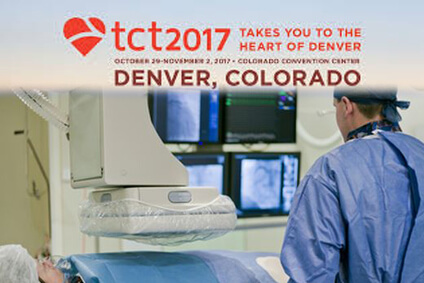Courtesy of SBHCI.
Angioplasty in patients with chronic stable angina and functionally significant lesions improves clinical outcomes and quality of life over the long term, as compared with optimal medical therapy alone. Furthermore, the invasive approach becomes more cost-effective as the years go by.
Previously, FAME 2 had shown that angioplasty was initially more expensive, but that the money saved by avoiding repeat revascularization substantially narrowed and closed that gap.
This study reinforces the idea that the greater the ischemic burden, the greater the benefit of revascularization.
Read also: “TCT 2017 | ORBITA: The Placebo Effect of Angioplasty”.
FAME 2 enrolled 1220 patients from 28 sites in Europe and the United States. All had chronic stable angina and angiographically significant lesions. FFR was measured in all target lesions, and patients with at least one lesion ≤0.80 (73% of the population) were randomized to optimal medical treatment with or without FFR-guided angioplasty. The other 27% of the population with no lesions FFR ≤0.80 were enrolled in a registry and received optimal medical treatment only.
The study was finalized early when interim data showed many events in the FFR-guided angioplasty group.
The 3-year data show that patients who received optimal medical treatment alone had a 22% rate of the primary endpoint (a composite of death, infarction, or urgent revascularization) compared with only 10.1% of the patients who received optimal medical treatment and FFR-guided angioplasty (p < 0.001).
Read also: “TCT 2017 | PREVAIL: Final Outcomes of the Watchman Device”.
Death and infarction events were numerically lower in the angioplasty arm, but the difference did not reach statistical significance, unlike statistics for urgent revascularizations, which were more than four times higher among patients who received medical treatment. This last factor was the one that finally tipped the scales (17.2% vs. 4.3%; p < 0.001).
Angina symptoms were lower at all time points throughout the 3-year follow up in the angioplasty arm, which probably encouraged the 44% crossover rate from the optimal medical treatment group to the angioplasty group.
Courtesy of the SBHCI.
Original title: Clinical outcomes and cost-effectiveness of fractional flow reserve-guided percutaneous coronary intervention in patients with stable coronary artery disease: three-year follow-up of the FAME 2 trial.
Presenter: William F. Fearon.
Get the latest scientific articles on interventional cardiologySubscribe to our weekly newsletter
We are interested in your opinion. Please, leave your comments, thoughts, questions, etc., below. They will be most welcome.






